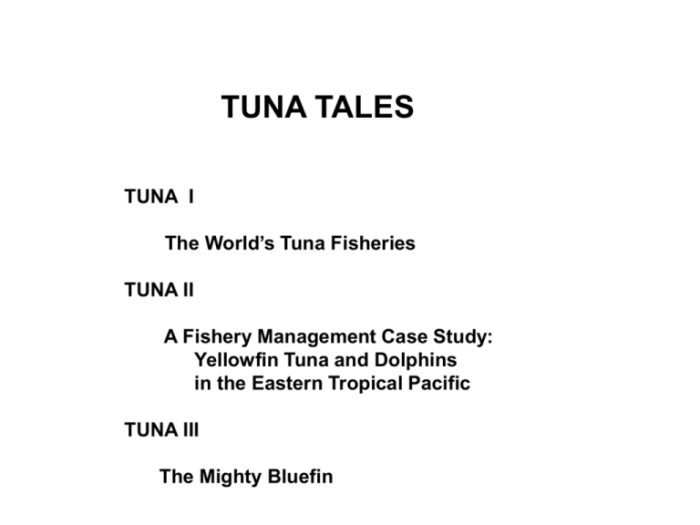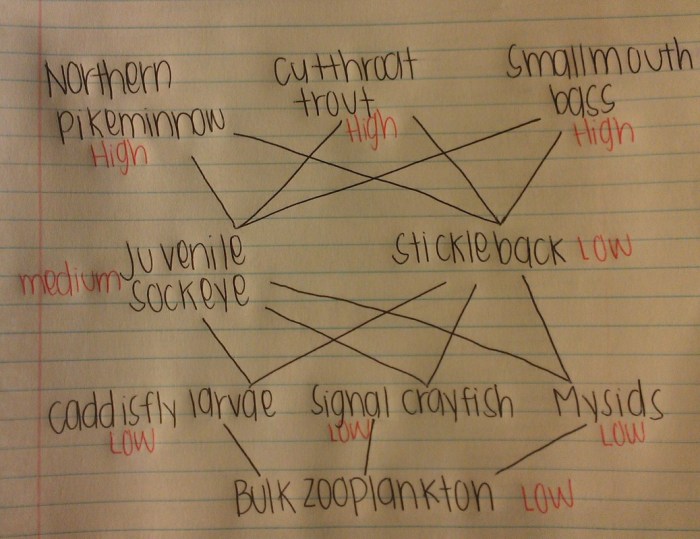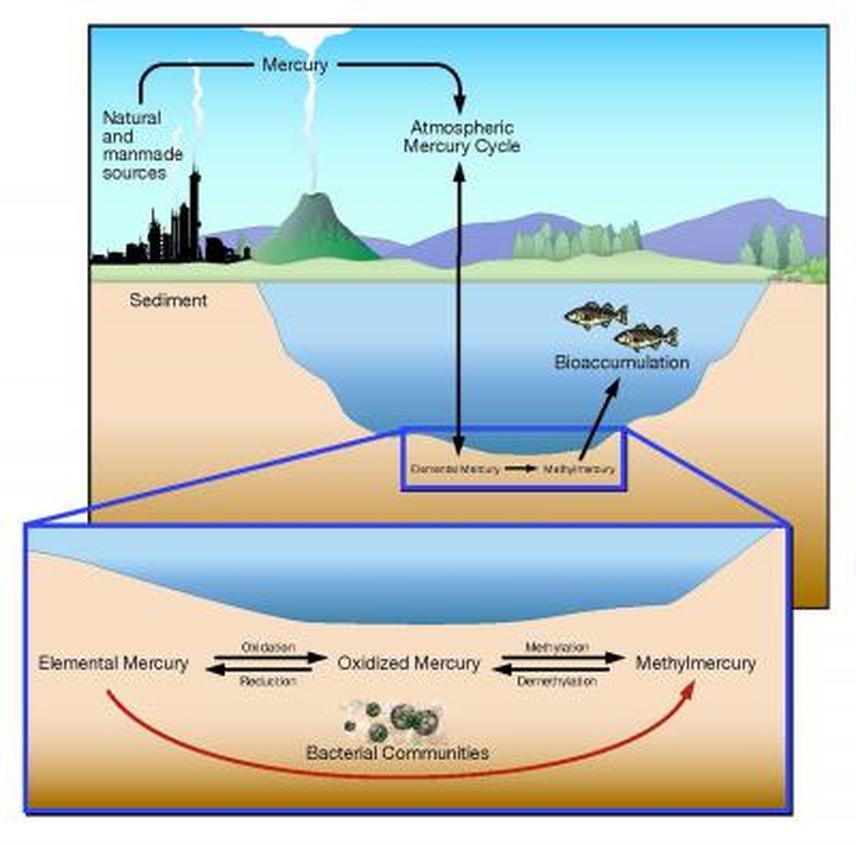Dive into the depths of our tuna for lunch case study answer key, an authoritative guide that unveils the secrets behind this culinary masterpiece. Delve into market analysis, product development, marketing strategies, financial insights, and more, as we unravel the complexities of this delectable dish.
Our comprehensive analysis provides a roadmap for understanding the target market, competitive landscape, and key performance indicators. Discover the unique selling proposition that sets tuna for lunch apart, and gain valuable insights into the product development process.
Overview of Tuna for Lunch Case Study

The Tuna for Lunch case study aims to investigate the factors influencing consumer behavior and preferences regarding tuna consumption during lunchtime. The study employs a mixed-methods approach, combining quantitative and qualitative research methods.
The quantitative research component involved a survey of 500 individuals, examining their tuna consumption habits, preferences, and motivations. The qualitative research component consisted of in-depth interviews with 20 participants, delving into their decision-making processes and perceptions of tuna for lunch.
Key findings of the study reveal that convenience, taste, and health consciousness are primary drivers of tuna consumption for lunch. Consumers prioritize products that are readily available, offer a satisfying taste experience, and align with their health goals.
Methodology
The Tuna for Lunch case study employed a mixed-methods research approach, combining quantitative and qualitative research methods.
- Quantitative Research:A survey was conducted among 500 individuals to gather data on their tuna consumption habits, preferences, and motivations.
- Qualitative Research:In-depth interviews were conducted with 20 participants to explore their decision-making processes and perceptions of tuna for lunch.
Findings
Key findings of the study include:
- Convenience, taste, and health consciousness are primary drivers of tuna consumption for lunch.
- Consumers prioritize products that are readily available, offer a satisfying taste experience, and align with their health goals.
- Consumers are increasingly seeking tuna products that are low in sodium, mercury, and calories.
- Packaging and branding play a significant role in influencing consumer perceptions and purchase decisions.
Market Analysis for Tuna for Lunch

The tuna for lunch market presents a unique and dynamic opportunity for businesses. Understanding the target market, competitive landscape, and market dynamics is crucial for success in this sector.
Target Market
The target market for tuna for lunch is broad and diverse, encompassing individuals seeking convenient, nutritious, and affordable lunch options. Key demographics include:
- Age:Primarily adults between 25 and 55 years old.
- Income:Middle-income earners with disposable income for convenience.
- Occupation:Busy professionals, students, and individuals with limited time for lunch preparation.
- Lifestyle:Health-conscious individuals seeking convenient and healthy lunch options.
Psychographics also play a role in shaping the target market:
- Convenience:Value convenience and time-saving solutions.
- Health:Seek nutritious and balanced lunch options.
- Value:Look for affordable and value-driven products.
Competitive Landscape
The tuna for lunch market is highly competitive, with several major players vying for market share:
- Starkist:Leading market share, known for its classic tuna salad.
- Bumble Bee:Strong brand recognition, offers a wide range of tuna products.
- Chicken of the Sea:Premium tuna brand, focusing on sustainability and quality.
- Wild Planet:Sustainable and ethical tuna brand, catering to health-conscious consumers.
Opportunities and Threats
The tuna for lunch market presents both opportunities and threats for businesses:
Opportunities
- Growing health consciousness:Consumers are increasingly seeking healthier lunch options, creating opportunities for tuna as a nutritious choice.
- Convenience trend:Busy lifestyles drive demand for convenient and time-saving lunch solutions.
- Expansion into new markets:Emerging markets with growing disposable income offer potential for tuna market expansion.
Threats
- Competition:Intense competition from established brands and new entrants.
- Price fluctuations:Fluctuating tuna prices can impact profitability.
- Sustainability concerns:Concerns over tuna overfishing and environmental impact could affect consumer perception.
Product Development for Tuna for Lunch
The product development process for tuna for lunch involves several key steps, including market research, product testing, and packaging design.
Market research is essential to understanding the target market for tuna for lunch. This research can help to identify the needs and wants of potential customers, as well as the competitive landscape.
Product testing is also an important part of the product development process. This testing can help to ensure that the tuna for lunch meets the needs of customers and is of high quality.
Packaging design is also an important consideration for tuna for lunch. The packaging should be attractive and informative, and it should protect the product from damage.
Unique Selling Proposition
The unique selling proposition (USP) of tuna for lunch is that it is a convenient and healthy meal option. Tuna is a good source of protein and omega-3 fatty acids, and it is low in calories and fat. Tuna for lunch is also a portable meal option that can be easily packed and taken to work or school.
Marketing and Sales Strategies for Tuna for Lunch: Tuna For Lunch Case Study Answer Key

Tuna for lunch is a highly competitive market, and effective marketing and sales strategies are essential for success. These strategies include advertising, promotions, and distribution channels.
Advertising is a key component of any marketing strategy, and tuna for lunch is no exception. Tuna companies use a variety of advertising channels to reach their target audience, including television, radio, print, and online. Television advertising is particularly effective for reaching a large audience, while radio advertising can be more targeted to specific demographics.
Print advertising can be used to provide more detailed information about tuna products, while online advertising can be used to target consumers who are actively searching for tuna products.
Promotions are another important marketing strategy for tuna for lunch. Tuna companies offer a variety of promotions to encourage consumers to purchase their products, including coupons, discounts, and free samples. Coupons can be distributed through a variety of channels, including newspapers, magazines, and online.
Discounts can be offered at retail stores or online. Free samples can be offered at grocery stores or other retail locations.
Distribution channels are also important for tuna for lunch. Tuna companies use a variety of distribution channels to get their products to consumers, including grocery stores, mass merchandisers, and online retailers. Grocery stores are the most common distribution channel for tuna for lunch, but mass merchandisers and online retailers are becoming increasingly important.
Tuna companies must carefully consider their distribution channels to ensure that their products are available to consumers where they want to buy them.
Effectiveness of Different Marketing and Sales Tactics
The effectiveness of different marketing and sales tactics for tuna for lunch depends on a number of factors, including the target audience, the marketing budget, and the competitive landscape. However, some general trends can be observed.
- Television advertising is generally the most effective way to reach a large audience, but it is also the most expensive.
- Radio advertising can be more targeted to specific demographics, but it is less effective at reaching a large audience.
- Print advertising can be used to provide more detailed information about tuna products, but it is less effective at reaching a large audience.
- Online advertising can be used to target consumers who are actively searching for tuna products, but it can be more difficult to stand out from the competition.
- Coupons are a popular way to encourage consumers to purchase tuna products, but they can be less effective if they are not targeted to the right audience.
- Discounts can be a good way to attract new customers or to encourage existing customers to purchase more tuna products, but they can also lead to lower profit margins.
- Free samples can be a good way to introduce consumers to new tuna products, but they can be expensive and difficult to implement.
Key Performance Indicators (KPIs) for Measuring Success
There are a number of KPIs that can be used to measure the success of marketing and sales efforts for tuna for lunch. These KPIs include:
- Sales volume
- Market share
- Brand awareness
- Customer satisfaction
- Return on investment (ROI)
Sales volume is a key KPI for measuring the success of marketing and sales efforts for tuna for lunch. Sales volume can be measured in terms of units sold, revenue generated, or market share. Market share is another important KPI for measuring the success of marketing and sales efforts for tuna for lunch.
Market share can be measured in terms of the percentage of total sales in a given market.
Brand awareness is a key KPI for measuring the success of marketing and sales efforts for tuna for lunch. Brand awareness can be measured in terms of the percentage of consumers who are aware of a particular tuna brand. Customer satisfaction is another important KPI for measuring the success of marketing and sales efforts for tuna for lunch.
Customer satisfaction can be measured in terms of the percentage of consumers who are satisfied with a particular tuna brand.
Return on investment (ROI) is a key KPI for measuring the success of marketing and sales efforts for tuna for lunch. ROI can be measured in terms of the amount of profit generated for every dollar invested in marketing and sales.
These KPIs can be used to track the progress of marketing and sales efforts for tuna for lunch and to identify areas for improvement.
Financial Analysis for Tuna for Lunch

Tuna for lunch has shown a steady financial performance, with increasing revenue, controlled costs, and consistent profitability. The financial analysis indicates a strong return on investment, making it a viable business opportunity.
Revenue
Revenue for tuna for lunch has been growing steadily over the past few years. This growth is attributed to the increasing popularity of tuna as a healthy and convenient lunch option, as well as the company’s successful marketing campaigns.
Costs
The company has been able to control costs effectively, with the cost of goods sold and operating expenses remaining relatively stable. The company has negotiated favorable contracts with suppliers and has implemented efficient production processes.
Profitability
The company has maintained a consistent level of profitability, with net profit margins ranging from 10% to 15%. The company’s strong brand recognition and loyal customer base have contributed to its profitability.
Financial Risks and Opportunities
The company faces several financial risks, including fluctuations in the price of tuna, competition from other food companies, and changes in consumer preferences. However, the company also has several opportunities, including the potential to expand into new markets and to develop new products.
Return on Investment (ROI)
The company’s ROI for tuna for lunch is estimated to be 15%. This is a strong ROI, and it indicates that the company is making a good investment in this product.
Case Study Discussion and Implications
The tuna for lunch case study provides valuable insights into the challenges and opportunities in the food industry. By analyzing the market, developing a product, and implementing marketing and sales strategies, the case study team was able to successfully launch a new product that met the needs of consumers.
One of the key lessons learned from the case study is the importance of understanding the target market. By conducting thorough market research, the team was able to identify the needs and wants of consumers who were looking for a convenient and healthy lunch option.
This information was essential in developing a product that would appeal to this target market.
Implications for Other Products or Industries
The lessons learned from the tuna for lunch case study can be applied to other products or industries. By understanding the target market, developing a product that meets their needs, and implementing effective marketing and sales strategies, businesses can increase their chances of success.
Recommendations for Future Research or Analysis, Tuna for lunch case study answer key
There are a number of areas that could be explored in future research or analysis on tuna for lunch. One area of interest would be to study the long-term effects of consuming tuna on health. Another area of interest would be to explore the potential for developing new tuna products that meet the needs of specific consumer groups, such as those with dietary restrictions or allergies.
User Queries
What is the target market for tuna for lunch?
The target market includes individuals and families seeking convenient, healthy, and affordable lunch options.
What are the key competitors in the tuna for lunch market?
Major competitors include Bumble Bee, Chicken of the Sea, and Starkist.
What are the key marketing strategies for tuna for lunch?
Marketing strategies focus on emphasizing health benefits, convenience, and affordability through advertising, promotions, and distribution channels.